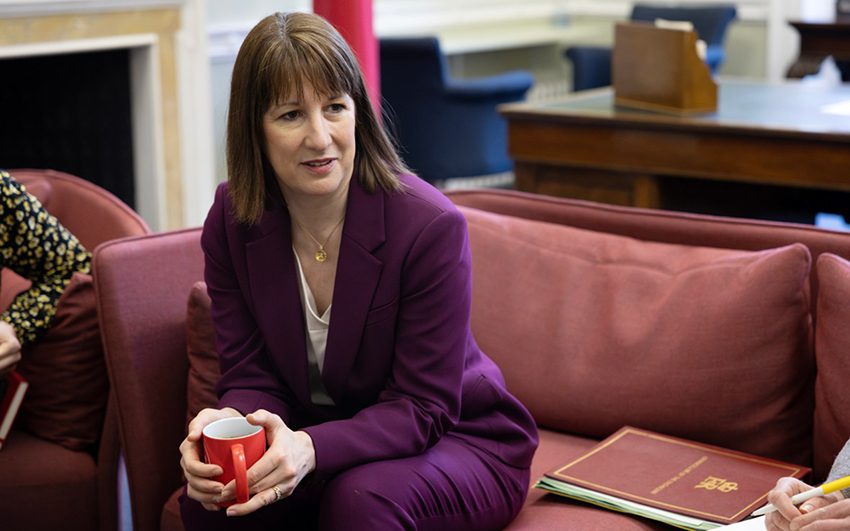Overcoming the barriers to Europe’s leadership in medical innovation
Over the years, Europe's share of global medicine R&D investments has dropped. However, with the new EU mandate, there is a chance to turn this around
At the start of the EU’s new mandate, we have the chance to reset the agenda for life sciences. Just imagine if the next generation of therapies were developed right here in Europe. Imagine if they could change the course of public health, helping Europeans to live longer and feel better.
Over the last 20 years, Europe has lost a quarter of its share of global research and development (R&D) investment to other, more ambitious regions like the US and China. We believe now is the time to come together and build a strategy that can help address Europe’s competitiveness challenges in life sciences , while equipping member states with the tools they need to address their health concerns.
We believe now is the time to come together and build a strategy that can help address Europe’s competitiveness challenges in life sciences.
Mario Draghi’s report on competitiveness was a positive indicator that Europe is waking up to this crisis. EU productivity declined by 1.2 percent year on year in the last quarter of 2023 – while, in contrast, US productivity rose by 2.6 percent. This trend is mirrored in life sciences. Despite contributing more to Europe’s trade balance than any other sector, our share of global R&D investment, advanced manufacturing and clinical trials has been falling. The US now spends $25 billion more than Europe on medical R&D. Back in 2002, that figure was just $2 billion. Europe’s share of global R&D investments has dropped from 41 percent in 2001 to just 31 percent today, while China’s share has surged from 1 percent to 8 percent.
As CEOs of global pharmaceutical companies, we regularly make decisions on where to locate research, development and manufacturing. These decisions are based on a range of factors that in combination, afford us the best chance of discovering, developing and delivering new medicines that can transform patients’ lives.
The Covid-19 pandemic underscored, perhaps like never before, that our health and economic growth are inextricably linked . With over 9,000 medicines and vaccines in development, contributing €311 billion to the EU economy and supporting 2.3 million jobs in the EU, our sector is in a unique position to help Europeans live longer and feel better while driving EU growth and resilience.
The Covid-19 pandemic underscored, perhaps like never before, that our health and economic growth are inextricably linked
Europe has great potential, a highly skilled workforce, cutting-edge science and world-renowned academic institutions. Our companies have a strong footprint in Europe – and we are committed to working with the EU and its member states to address the issues that are standing in their way becoming a world leader in medical innovation.
1. It starts with leadership and accountability.
We were encouraged by President Ursula von der Leyen’s inclusion of a life sciences strategy for Europe in the political guidelines for the next mandate of the European Commission and its subsequent inclusion in the mission letters for commissioners-designates.
Responsibility for policies that affect our sector sit across multiple commission directorates. This can lead to a fragmented legislative environment where contradictory and incoherent policies have real-life consequences for life sciences companies operating in Europe.
Dedicated leadership, oversight and accountability for its successful delivery would give a European life sciences strategy the best chance of success. This must include a reality check on existing legislation to facilitate a new level of policy coherence, making Europe a more competitive place to discover, develop and manufacture new medicines.
2. And continues with collaboration.
At Novo Nordisk, Bayer and Ipsen, we have generations of experience in discovering, developing and delivering new treatments that have transformed patients’ lives. As an industry, we invest a greater percentage of revenue back into R&D than any other sector. That experience has led to a deep understanding of the process of translating the seed of an idea into an innovative treatment and getting these to patients at pace and scale as well as what inspires, fosters and supports medical innovation in a region.
We want European patients to benefit from these breakthroughs at the earliest possible opportunity. We are keen to offer this energy, experience and expertise and to work with the EU and member states to help define the content, deliverables and metrics of a European life sciences strategy that can really make a difference.
3. Recognition of health innovation as an investment rather than a cost
If Europe is to be the engine room of new discoveries, our healthcare systems need to be able to adapt and integrate innovations quickly and efficiently. Health expenditure should not be viewed as simply a cost to the system but as a critical investment in Europe’s collective future.
If Europe is to be the engine room of new discoveries, our healthcare systems need to be able to adapt and integrate innovations quickly and efficiently
Only if we recognize this can we start a real conversation on how investing in prevention, digitalization and upgrading our health infrastructure can lead to savings for health systems. These savings can be used to invest in new breakthrough technologies, improve mental health care services, fund the green transition, or finance a stronger, more secure Europe for generations to come, all while attracting inward investment and driving growth.
A call to action for a competitive, resilient and healthy Europe
The holistic view of our sector taken from the Draghi report recognizes the industry’s strategic importance to European resilience, its economy and health. Our sector can be a driver for achieving the “first and most important” area of action identified by Draghi: “Europe must profoundly refocus its collective efforts on closing the innovation gap”. We have been making this case consistently – and if we can achieve this in pharmaceuticals, we will change lives across Europe and the world. Doing so will require wide-ranging reform, but as the leadership of EFPIA, we are ready for real dialogue on how to reality-check existing legislation and develop a truly transformative life sciences strategy for Europe.
The holistic view of our sector taken from the Draghi report recognizes the industry’s strategic importance to European resilience, its economy and health
What's Your Reaction?



















































